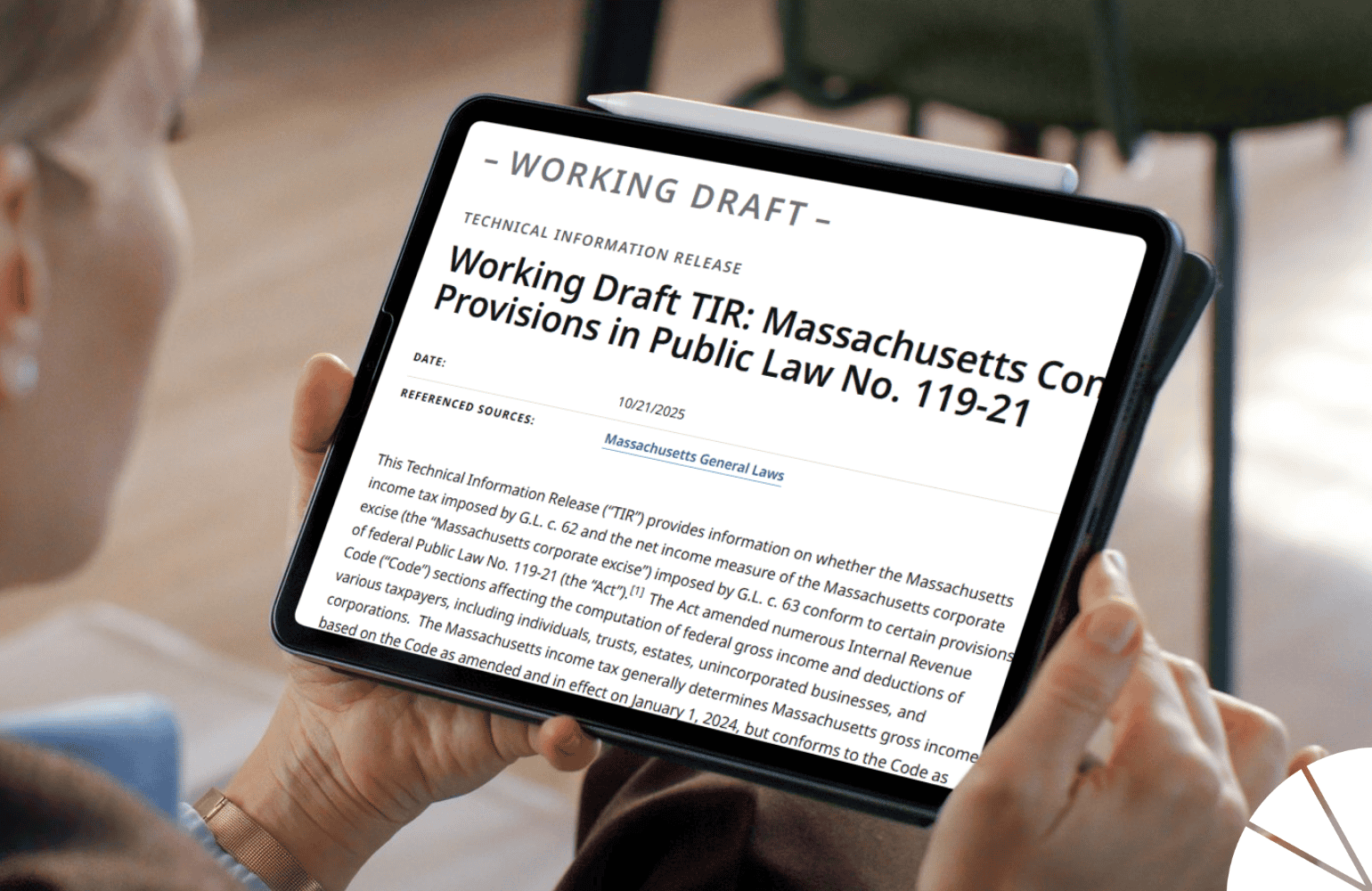
Tax Rates Remain Lower
- Current brackets of 10% to 37% are extended beyond 2025.
- This avoids the scheduled reversion to a top rate of 39.6%.
- The wider bracket structure introduced by TCJA is preserved through at least 2029.
What this means for you: Most taxpayers will continue to benefit from lower rates, but planning is still necessary to evaluate how income and deductions interact within these brackets.
Standard Deduction Extended
- Single: $15,750 ($17,750 if age 65+)
- Married filing jointly: $31,500 (plus $1,600 for each spouse age 65+)
- Head of household: $23,625 ($25,625 if age 65+)
Planning Tip: Continue tracking annual expenses for medical costs, state and local taxes, and charitable giving. If itemized deductions exceed the standard deduction, additional tax savings may be available.
New $6,000 Deduction for Seniors (2025–2028)
- Available for taxpayers age 65 and older.
- Phases out beginning at Modified AGI of $75,000 (single) or $150,000 (joint).
- Fully eliminated at $175,000 (single) or $250,000 (joint).
Why this exists: Congress had initially explored eliminating taxes on Social Security benefits, but when that proved unworkable, lawmakers created this deduction instead.
Why it matters: Managing adjusted gross income through strategies such as Qualified Charitable Distributions may help preserve eligibility.
Charitable Deduction Without Itemizing (2026+)
- Taxpayers who do not itemize may deduct up to $1,000 (single) or $2,000 (joint).
- Contributions to donor-advised funds and private foundations are excluded.
Itemized Deduction Changes
Medical Expenses
- Deductible once expenses exceed 7.5% of AGI.
- Includes out-of-pocket medical costs, premiums, long-term care insurance (limits apply), and medical supplies.
State and Local Taxes (SALT)
- Cap raised to $40,000 ($20,000 MFS) in 2025.
- Phases out as income exceeds $500,000 ($250,000 MFS). Fully reduced back to $10,000 above $600,000.
- Caps and thresholds increase 1% annually through 2029. In 2030, the $10,000 cap returns.
Charitable Contributions
- 60% of AGI limit retained (was set to revert to 50%).
- Starting in 2026, contributions must exceed 0.5% of AGI to count.
- For top-bracket taxpayers (37%), the value of deductions is capped at 35% savings.
Planning Considerations:
- End-of-year timing may be critical.
- Bunching deductions into one year could maximize benefits.
- Consider using donor-advised funds before new limits apply.
New Above-the-Line Deductions (2025–2028)
Tip Income
- Deduction up to $25,000.
- Phases out between $150,000–$400,000 (single) / $300,000–$550,000 (joint).
- Treasury guidance lists nearly 70 occupations that qualify.
Overtime Pay
- Deduction up to $12,500 of the premium portion of overtime wages.
- Fully phased out at $275,000 (single) / $425,000 (joint).
Car Loan Interest
- Deduction up to $10,000 per year for U.S.-assembled personal vehicles under 14,000 lbs.
- Phased out between $100,000–$150,000 (single) / $200,000–$250,000 (joint).
Takeaway: These deductions are highly income-sensitive. Strategic timing of income or deductions can preserve eligibility.
Family-Related Credits and Benefits
Child Tax Credit
- Increased from $2,000 to $2,200 per child, with annual inflation adjustments.
- Phases out beginning at $200,000 (single) / $400,000 (joint).
- Refundable portion capped at $1,700 per child.
Dependent Care Benefits
- Pre-tax FSA cap increased from $5,000 to $7,500 beginning in 2026.
- Credit percentage and phase-out thresholds improved.
- Reminder: FSA elections are made during year-end benefit enrollment. Missing this step could mean missing out on tax savings.

Clean Energy Incentives Ending
- Credits for clean vehicles expire September 30, 2025.
- Credits for energy-efficient home improvements and renewable systems expire December 31, 2025.
Action Step: Consider completing energy-related purchases before these deadlines.
Alternative Minimum Tax (AMT) Expands in 2026
- Exemption thresholds lowered to $88,100 (single) and $137,000 (joint).
- Phaseouts begin at $500,000 (single) and $1,000,000 (joint).
Common AMT Triggers:
- Large capital gains
- Exercising incentive stock options
- High state and local tax deductions
- Accelerated depreciation
- Certain tax-exempt bonds
Planning Tip: Run proactive tax projections. Consider Roth conversions, harvesting investment losses, or timing deductions to minimize exposure.
Trump Savings Accounts (2026+)
- $1,000 government-funded account for newborns.
- Parents may contribute up to $5,000 annually, tax-deferred.
- Rolls into an IRA at age 18.
- Employer contributions up to $2,500 permitted and not treated as income.
- Timing note: Accounts are legislated in 2025 but actual funding does not begin until 2026.
Business and Estate Provisions
Qualified Business Income Deduction
- 20% deduction extended.
- Phases out for certain high-earning service professionals.
Qualified Small Business Stock (QSBS)
- Capital gain exclusion limit raised from $10M to $15M.
- Holding periods shortened:
- 3 years = 50% capital gain exclusion
- 4 years = 75% capital gain exclusion
- 5 years = 100% capital gain exclusion
Planning Insight: This change enhances liquidity opportunities for founders and early investors. Reviewing stock qualification status and holding periods now can help maximize tax-free gains later.
Estate and Gift Tax
- Exemption raised to $15M per person in 2026 (indexed annually).
Excess Business Losses
- Permanently treated as net operating losses.
Capital Investments
- 100% bonus depreciation restored for property placed in service after January 19, 2025.
- Section 179 limit increased to $2.5M with full phase-out at $6.5M.
Research and Development Expenses
- Full expensing restored retroactively to 2024.
- Businesses may accelerate previously amortized 2022–2024 costs into 2025 (or spread over 2025–2026).
What You Should Do Now
- Review 2025 income and deductions against projections for 2026.
- Consider whether accelerating or deferring expenses will maximize benefits.
- Seniors: evaluate strategies to preserve eligibility for the $6,000 deduction.
- Reassess estate and succession plans under the higher thresholds.
- Monitor tip, overtime, and car loan interest eligibility based on income.
- Evaluate clean energy purchases before credits expire.
- Run tax projections to measure AMT exposure.
Final Thought
OBBBA creates both opportunities and complexities. Careful planning around deductions, credits, and timing can make a meaningful difference in your long-term tax outlook.
LGA’s Private Client Group is here to help you navigate these changes. Contact your LGA advisor today to review your 2025 strategy.








